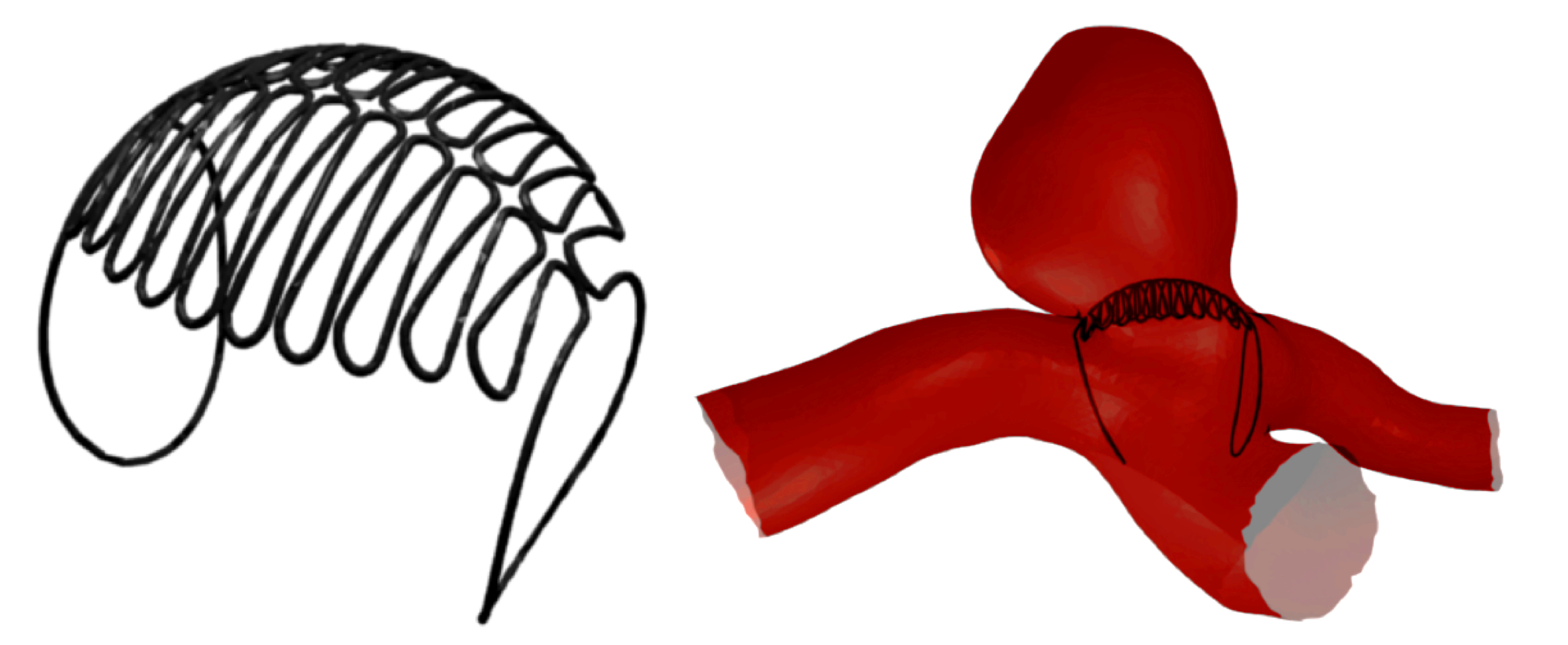The MINT team is developing a device to treat cerebral aneurysms located at vessel bifurcations- a complicated aneurysm location often requiring patients to undergo open brain surgery. MINT’s Sphere is an endolumenal flow diverting device that sits in the vessel bifurcation, adjacent to the aneurysm, and sufficiently reduces aneurysm blood flow to allow healing. Sphere reduces aneurysm inflow by positioning a high density patterned face against the aneurysm neck while being secured in the healthy parent vessel by two open loops, resulting in negligible disruption of flow through the parent and daughter vessels.
Unmet Clinical Need
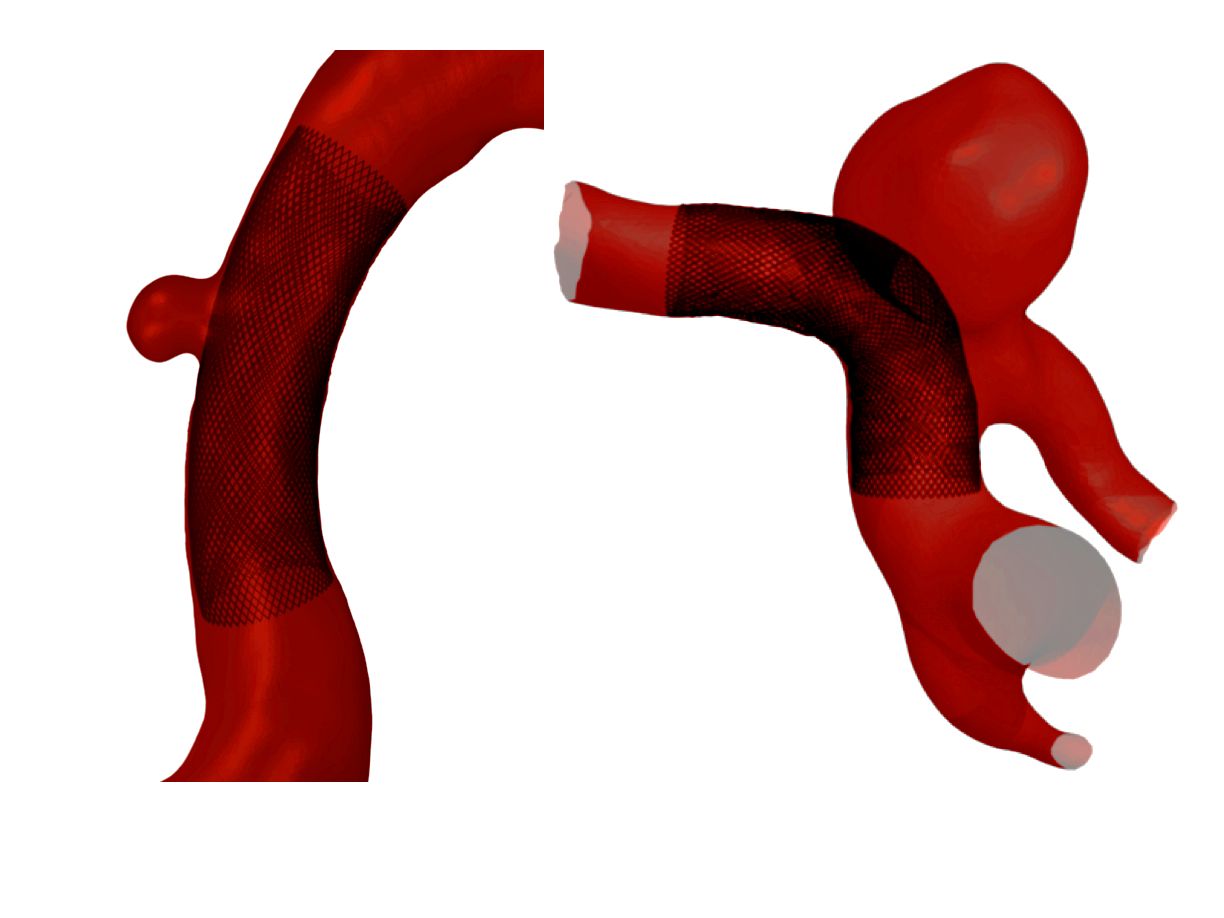 Approximately 70% of all cerebral aneurysms are located at vessel bifurcations. Existing stent technologies applied to bifurcations jail branching daughter vessels and inhibit flow. Coils migrate due to the complex anatomy and flow characteristics of bifurcated vessels. Currently, there are no endovascular devices that are designed to treat bifurcation aneurysms by treating the neck and avoiding contact inside the aneurysm. The figure above, illustrates a side wall and bifurcation aneurysm treatment using a stent or Flow-Diverter. It can be seen that a daughter vessel is occluded when a tubular stent is used to treat a bifurcation aneurysm.
Approximately 70% of all cerebral aneurysms are located at vessel bifurcations. Existing stent technologies applied to bifurcations jail branching daughter vessels and inhibit flow. Coils migrate due to the complex anatomy and flow characteristics of bifurcated vessels. Currently, there are no endovascular devices that are designed to treat bifurcation aneurysms by treating the neck and avoiding contact inside the aneurysm. The figure above, illustrates a side wall and bifurcation aneurysm treatment using a stent or Flow-Diverter. It can be seen that a daughter vessel is occluded when a tubular stent is used to treat a bifurcation aneurysm.
Solution
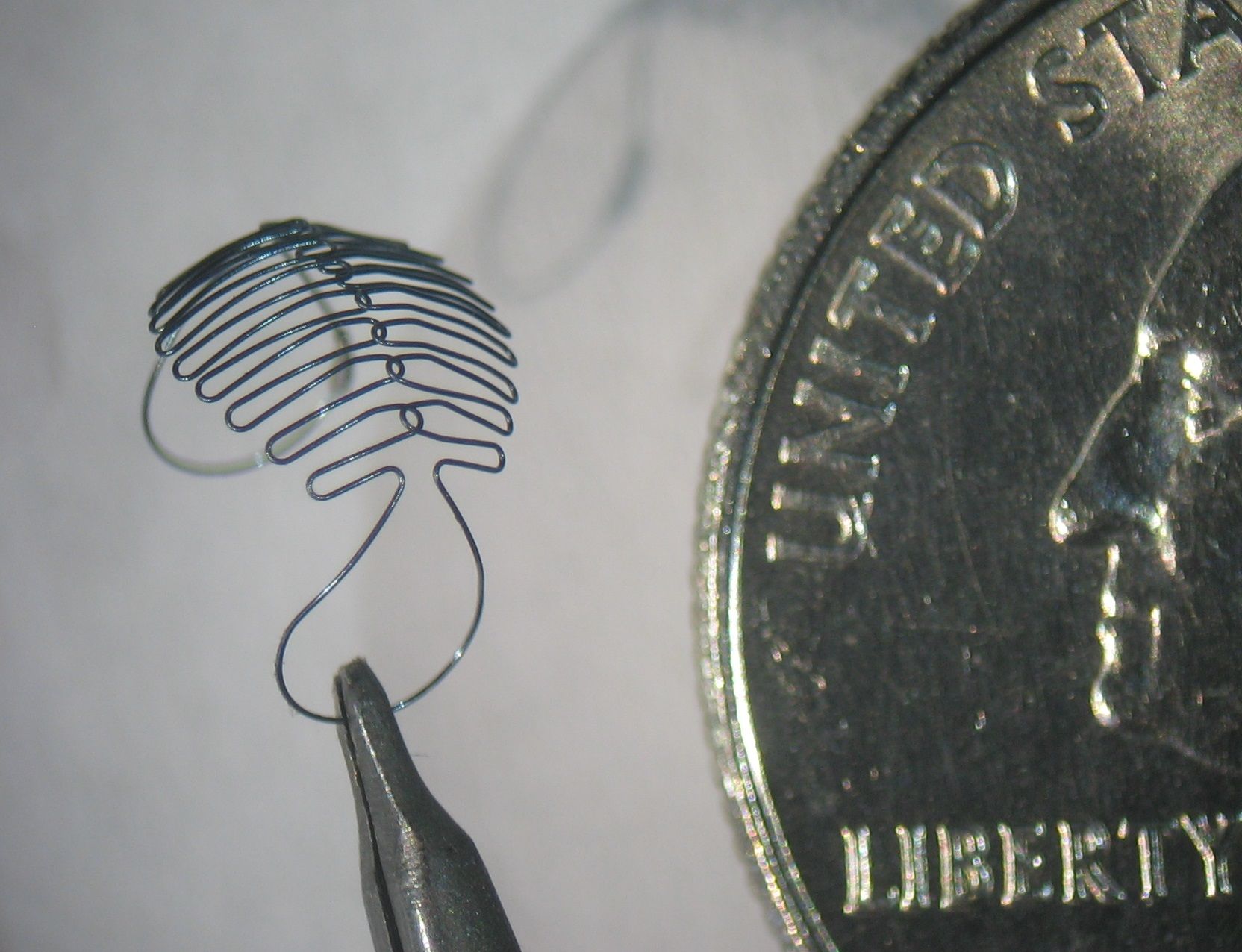 Sphere is designed and constructed from a single loop of thin flexible Nitinol wire. This loop is stretched into a very low profile that fits into a catheter so it can be delivered to the aneurysm site by standard endovascular techniques. Once at the aneurysm site, Sphere is controllably released from its catheter and recoils into its spherical shape in the vessel bifurcation, placing Sphere’s dense face against the aneurysm neck. The dense face reduces blood flow into the aneurysm, allowing the aneurysm to heal without open surgery.
Sphere is designed and constructed from a single loop of thin flexible Nitinol wire. This loop is stretched into a very low profile that fits into a catheter so it can be delivered to the aneurysm site by standard endovascular techniques. Once at the aneurysm site, Sphere is controllably released from its catheter and recoils into its spherical shape in the vessel bifurcation, placing Sphere’s dense face against the aneurysm neck. The dense face reduces blood flow into the aneurysm, allowing the aneurysm to heal without open surgery.
Advantages of the Sphere design include:
- Sphere is positioned outside the aneurysm: this avoids the need to treat the aneurysm dome, as is required by coiling. The aneurysm dome is particularly fragile and vulnerable to puncture or rupture
- Sphere is predominantly an open structure: blood freely flows through all but the high density surface of the Sphere, which directly faces the aneurysm neck. Stents, which are tubular devices placed into the vascular lumen, are not ideal for bifurcation aneurysms since it also reduces blood flow to the daughter vessel(s).
- Sphere is composed of a single wire or loop: The shape of the Sphere can be elongated or uncoiled into a long and thin profile allowing it to be delivered to the aneurysm site through a catheter. The wire loop is controlled by the clinician and is allowed to recoil back into its spherical shape and correctly positioned at the aneurysm site
Computational Fluid Dynamics (CFD) Study Results
Idealized computer models of a bifurcation aneurysm were first used to demonstrate aneurysm flow reduction achieved by Sphere. Computer simulation studies show that there is a 56% peak flow reduction in a basilar artery aneurysm.
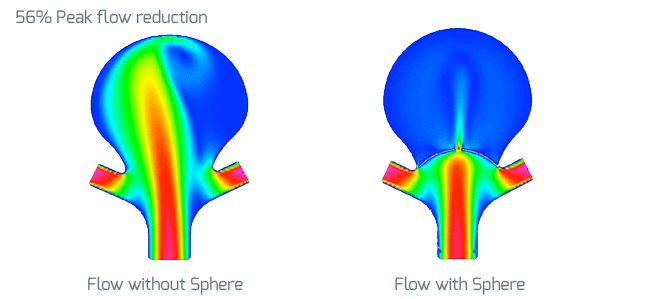
Additional CFD analysis was performed in anatomically accurate human aneurysms. The results in the figures below show a 72% reduction of flow into the aneurysm without reducing flow into the right daughter vessel.
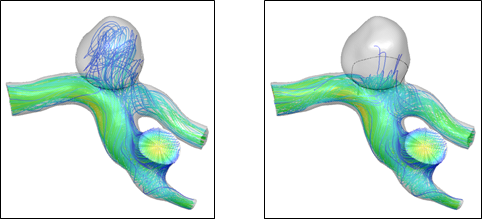
Figure: Shows Sphere reduces flow into anatomically correct human aneurysm by 72%. Before (left), after (right).


